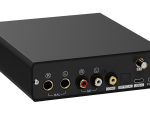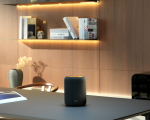
Daniel de la Hoz
It’s no secret that Generation Z grew up surrounded by technology, but the way these youngsters use certain features and gadgets may surprise you.
Generation Z, commonly referred to as Gen Z or Zoomers, is made up of people born after 1997, according to the Pew Research Center. They have already witnessed the rise of smartphones, social media and, more recently, artificial intelligence in their lifetimes, but that doesn’t mean they’ve counted out the ghosts-of-devices-past.
For instance, they have embraced old-school digital cameras. The hashtag #digitalcamera has more than 1 billion views on TikTok after the devices were popularized by Gen Z’s desire to strike a more casual, nostalgic tone with their photos.
But make no mistake, the members of this generation will also school you with their unspoken rules for emoji use, auto capitalization and more.
Here are some secrets to how the youngest generation in the workforce uses technology:
Voice notes
Most Zoomers hate talking on the phone, but sometimes it’s easier to convey tone with your voice instead of through a text message. Enter the voice memo.
Voice memos, also called voice notes or voice messages, are a feature on messaging apps like iMessage and WhatsApp that allow you to record a message in audio form.
It’s become a popular way to send notes to friends without having to type long messages, especially among Gen Z. Last year, WhatsApp said its users sent an average of 7 billion voice messages every day.
Zoomers love the voice memo feature mostly because it’s easy to use without having to speak with someone on the other end simultaneously. Whether you have a story to share that would take a while to type out or you just don’t want your tone to get lost in translation, voice memos are a simple alternative to a text.
Proper emoji usage
A group of emojis
If you thought you had emojis figured out, think again.
Emojis are the expressive characters that smartphone users can add to their text messages and social media posts for a little extra umph and pizzazz. The total number of emojis available around the globe was expected to climb to nearly 3,500 this year, according to a report from Statista.
But as the old saying goes, a picture is worth a thousand words, and with Gen Z, there’s often more to emojis than meets the eye.
For instance, Gen Z tends not to use the traditional laughing emoji to express joy or laughter. Instead, these users will often use the loudly crying face emoji, which features thick streams of tears, or the skull emoji when they find something funny. When someone shares a joke, a popular response among members of Gen Z is the phrase “I’m dead,” hence the skull.
Gen Z users will also use the clown face emoji to signify when they think someone is behaving foolishly, or like a clown. The eyes emoji is often used to signify sly or cheeky intrigue in something, and the upside-down face tends to signify that things are not going according to plan.
Emojis tend to come in and out of fashion among this generation, so it’s very possible that new trends will also emerge down the line.
No autocapitalization
Gen Z often chooses not to use capital letters.
Jake Piazza | CNBC
Much of Gen Z has decided it is out with the capital letters, and in with the lowercase.
For years, Zoomers have avoided using capital letters in texts, social media posts and other forms of digital communication. Many deactivate the autocapitalization feature that comes as the default setting in smartphones.
Discourse on X, formerly known as Twitter, over Gen Z’s lack of punctuation has occurred for years. It’s filled with playful banter calling out Zoomers for improper grammar and asking why Gen Z decided to “murder” the capital letter.
The answer to that is murky. There was never a secret virtual meeting to conspire against conventional English punctuation, and there are still plenty of Zoomers who stick to the auto-capitalization feature.
Some say they like the look of the lower-case letters and the care-free aesthetic that accompanies it. Other internet theories say the lack of capital usage is Gen Z’s dig at capitalism and the establishment. However serious the reasoning, Gen Z’s elimination of the capital letter is one of the more long-standing trends of the generation.
Group chat names
Gen Z names many of its group chats.
Jake Piazza | CNBC
If you find yourself in a text group chat with people from Gen Z, there’s a good chance they’ll assign it a name.
Gen Z labels many of its group chats. Sometimes it’s for practical reasons, like the name of a group project for a high school or college class. Other times it’s for fun, such as coming up with a quirky name for your chat with all your friends or family.
In many messaging services like Apple’s iMessage, any member of the group can change the chat’s name to whatever they please. The only things preventing a name change are whatever unspoken agreements the chat members made, and, of course, the fear that a separate group chat could be started without you.
There is also some practicality to the naming. It allows for easier searching when trying to find the conversation if it is not one of your more recent ones.
Anyone who would like to name a group chat in iMessage on an iPhone can do so by tapping on the icons in the top center of the conversation, then pressing “Change Name and Photo.” From there, you can type whatever name you would like. No pressure.
Digital cameras
Getty Images
From wide-leg jeans to claw clips, Gen Z is known for bringing back popular early 2000s trends. When it comes to tech, nothing says Y2K more than a digital camera.
More than 60% of Gen Z used or owned a digital camera in 2019, according to Statista. The digital camera market is also expected to grow about 2% annually through 2028, and it’s likely Gen Z has a hand in it.
Zoomers love to take photos and value a good Instagram aesthetic, so digital cameras are a great way to accomplish both. Not only is using a digital camera nostalgic, they have sharper flash and crisper image quality than a smartphone. Because cameras have more physical space for sensors than smartphones, they have larger sensors and in turn better image quality.
Part of the allure of using a digital camera is also the experience. Since the photos are not instantly available on your phone, most Zoomers who use digital cameras appreciate the delayed gratification in having to upload the photos onto a desktop. This means you can take photos with your friends and then forget about them until you have time to sit in front of a computer later, which is a great way to be in the moment.
Using a digital camera is a creative alternative to iPhone pictures, and the process of taking them is a lot more fun. The photos they take are a great way to elevate your Instagram feed or just an exciting way to make your life feel like a big editorial shoot.
Photo filter apps
If you don’t want to take the time to upload your photos to your computer or spend money on a digital camera, photo filter apps are a great alternative.
There are tons of filter apps available to download on your smartphone, and they entail uploading a photo and adjusting the visual properties like brightness, white balance or contrast. Many apps that are popular with Gen Z, like VSCO, have presets that add the filter right to your photo.
A lot of Zoomers like to use filter apps to make their photos sharper, brighter or more colorful. However, in recent years, Gen Z has revitalized filter apps that create photos with film-camera vibes.
For example, apps like Dispo or Huji Cam force a waiting period before the photos are available to view, which is meant to emulate the experience of using a film camera. Other apps, like Dazz Cam, have the option for users to upload their own smartphone image and instantly add a film-esque filter to it.
The reason why these filter apps are so popular among Gen Z is similar to the resurgence of digital cameras: nostalgia and creativity. Film cameras produce grainy and blurry photos, creating a distinct aesthetic that can make your social media stand out. However, Gen Z values convenience, so these filter apps make it easy to achieve the film camera vibe without the work.
Flip phones
Medioimages | Photodisc | Getty Images
Gen Z has also popularized the return of the flip phone – yes, the flip phone.
Make no mistake, these tech-savvy youngsters aren’t trading in their smartphones completely, but many members of Gen Z have invested in a second phone as a way to stay present at social gatherings. A recent report from Common Sense Media found that teens can receive anywhere from hundreds to thousands of notifications per day, and escaping from the constant barrage of pings can be a challenge.
As a result, some members of Gen Z are turning to flip phones. These devices can be found for under $40 at retailers like Walmart and Amazon, and their relative simplicity means they can provide some reprieve from frequent Instagram, Snapchat, TikTok and text notifications.
On TikTok, the hashtag #flipphone has more than 830 million views, and users rave about the devices’ old-school cameras, how they are less distracting and how they can serve as good conversation starters.
In other words, flip phones are helping Gen Z unplug without going entirely off the grid.
Dark mode
Gen Z uses dark mode instead of light mode.
Jake Piazza | CNBC
Gen Z loves to tinker with the factory settings of their smartphones, and one way they do so is by switching their screen display from light mode to dark mode.
In iPhones and Androids, dark mode means that instead of defaulting to bright, white backgrounds, much of the screen backgrounds are black or other dark shades. It doesn’t make anything more than cosmetic changes, so you won’t have to worry about learning new phone commands.
This is another example of a Gen Z trend that has been around for years.
According to posts on X, some members of Gen Z say it’s easier on their eyes, and others like that the setting extends their battery life. Zoomers spend an average of 7 hours and 18 minutes on a screen per day, according to data from Zippia.
It’s not difficult to switch your iPhone to if you’d like to try. Just go to Settings, click on “Display & Brightness” and then you will see the light and dark mode options.









